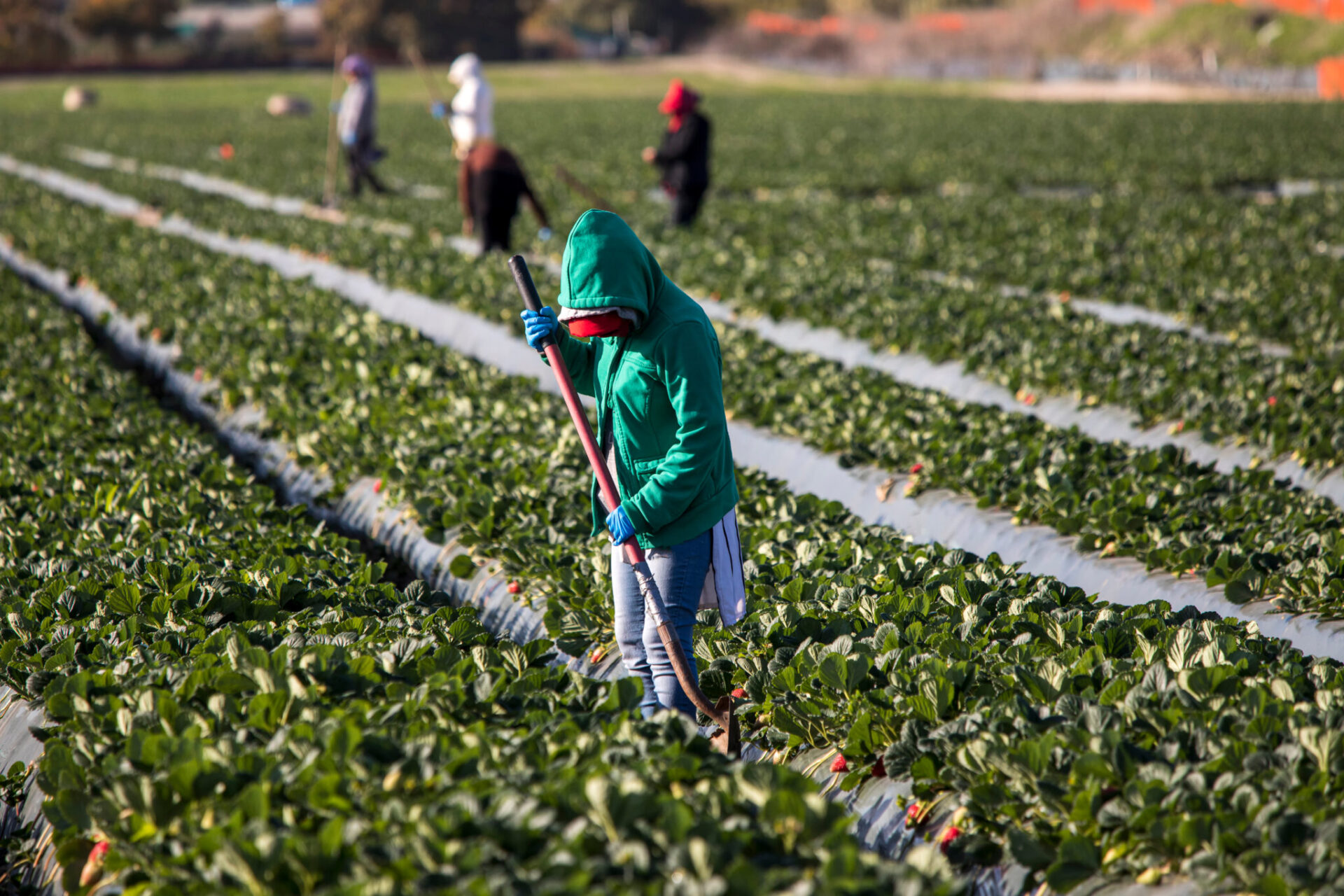It’s no secret that California’s dry, hot climate from spring to late fall, coupled with our recent drought conditions, creates the optimal environment for wildfires to emerge across the state. In recent years, the length of the wildfire season has expanded, the fires have grown, and they are encroaching in on our fields and orchards. In 2020, there were over 8,100 fires that burned more the 4.5 million acres of land in California.
These conditions have led the Department of Industrial Relations’ (DIR) Occupational Safety and Standards Board in February 2021 to adopt a safety standard to protect outdoor workers. This regulation applies to outdoor worksites where the current Air Quality Index (AQI) for airborne particulate matter (PM) is 151 or higher, and where employers should reasonably anticipate that employees could be exposed to wildfire smoke. Below is an overview of the regulation and some best practices for keeping your workforce safe.
Have a Plan and Reduce Exposure
As with many of the other Cal/OSHA regulations, the Wildfire Smoke Prevention Standard requires employers to develop an emergency action plan. The plan must include emergency evacuation routes for all work locations and should be communicated to your employees. It is also important to have alternate plans in place. If it is suspected that the air quality will reach the unhealthy range, consider adjusting the crew’s work schedule or move to another worksite where the air quality is better or to an indoor worksite. A best practice would include contacting emergency services in your area. Discuss your plan details with emergency personnel, provide worksite locations and your communication plan, and ask for their input on proposed evacuation routes prior to an incident occurring.
Monitor Air Quality
It is essential that the person responsible for your crews working outdoors is checking the AQI Particulate Matter 2.5 (PM) forecast prior to the shift beginning and throughout the workday. The Air Quality Index measures the level of pollution in the air. The index ranges from 0 to 500. An AQI between 0 and 50 is good, 51 to 100 is moderate, 101 to 150 is unhealthy for sensitive groups and 151 to 200 is unhealthy.
The PM measurement accounts for solid particles and liquid droplets in the air. PM 2.5 consists of fine inhalable particles with diameters that are generally 2.5 micrometers and smaller. A measurement of 2.5 micrometers is about 30 times smaller than the diameter of a human hair. While incredibly small, these particulates can cause damage to the heart and lungs. The AQI measures the PM 2.5 in the air. For instance, if the AQI is at 30, then the levels of PM 2.5 are in the healthy range; however, if the AQI is 201 or more, the PM 2.5 has reached dangerous levels for people working outside.
Information on the AQI and PM 2.5 specific to your area can easily be found on several websites, including U.S. EPA AirNow, U.S. Forest Service, California Air Resources Board and your local air pollution district. It is also important to note that the AQI and PM 2.5 levels will fluctuate throughout the day, usually getting worse in the afternoon hours, so it is critical that the individual responsible for the implementation of this plan checks the levels on a regular basis.
Have Respirators Ready
The Wildfire Smoke Prevention Regulation requires employers provide respiratory protection equipment that filters out fine particles. Respirators must be labeled N-95, N-99, N-100, R-95, P-95, P-99 or P-100, and be approved by the U.S. National Institute for Occupational Safety and Health (NIOSH). If the AQI is 151 or higher, but does not exceed 500, respirators must be made available to employees for voluntary use. If the AQI is 500 or greater, then respirators are required to be worn. As a best practice, ensure you have an ample supply of respirators in your inventory for your employees throughout the season.

Train Employees
One of the most essential elements of your Wildfire Smoke Protection Plan includes training your employees. The regulation requires the following topics be covered in your training program:
- The health effects of wildfire smoke.
- The right to obtain medical treatment without fear of reprisal.
- How employees can obtain the current AQI (provide them with the website.)
- Share your two-way communication system with workers on how you will keep them updated on changing conditions.
- Provide compliant respirators, show them how to use and maintain them and encourage them to use them (they can refuse to wear one. and if someone does, there needs to be a waiver where they sign off that they were offered a respirator and declined to use it) The employer must require employees to use respirators when the AQI for PM2.5 is greater than 500.
- The importance, limitations and benefits of using a respirator when exposed to wildfire smoke.
- What you will do to protect them from smoke (i.e., when you will stop work, when you will move them to another location, etc.)
It is highly recommended that all businesses with an outdoor workforce review the Cal/OSHA regulation, which can be found at dir.ca.gov/title8/5141_1.html. For additional assistance on developing your Wildfire Smoke Protection Plan or worker training, please contact AgSafe at safeinfo@agsafe.org.
AgSafe is a 501c3 nonprofit providing training, education, outreach and tools in the areas of safety, labor relations, pesticide compliance and human resources for the agricultural community. Since 1991, AgSafe has educated over 100,000 employers, supervisors and workers about these critical issues.
















